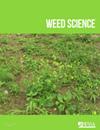Breeding allelopathy in cereal rye for weed suppression
IF 2.5
2区 农林科学
Q2 AGRONOMY
引用次数: 0
Abstract
Rapid increase in the hectarage and agricultural systems that use cover cropping for soil conservation and improvement, soil moisture retention, and weed management has highlighted the need to develop formal breeding programs for cover crop species. Cereal rye (Secale cereale L.) is preferred by many growers due to high biomass production and weed suppression potential, which is believed to be partially due to allelopathy. Rye germplasm exhibits large variability in allelopathic activity, which could be used to breed rye with enhanced weed suppression. Here, we provide an overview of rye history and breeding and describe a strategy to develop rye lines with increased allelopathic activity. The discussion focuses on ways to deal with important challenges to achieve this goal including obligate cross pollination and its consequent high segregation levels, and the need to quantify allelopathic activity under field conditions. This review seeks to encourage weed scientists to collaborate with plant breeders and promote the development of cover crop cultivars better suited to reduce weed populations.培育谷物黑麦的等位基因以抑制杂草
利用覆盖种植进行土壤保持和改良、土壤保湿和杂草管理的面积和农业系统迅速增加,这突出表明有必要为覆盖作物物种制定正式的育种计划。谷物黑麦(Secale cereale L.)因其生物量产量高和抑制杂草的潜力而受到许多种植者的青睐,据信这部分归因于等位基因。黑麦种质在等位病理学活性方面表现出很大的变异性,可用于培育具有更强杂草抑制能力的黑麦。在此,我们概述了黑麦的历史和育种情况,并介绍了培育具有更强等位病理学活性的黑麦品系的策略。讨论的重点是如何应对实现这一目标所面临的重要挑战,包括强制异花授粉及其随之而来的高分离水平,以及在田间条件下量化等效活性的必要性。本综述旨在鼓励杂草科学家与植物育种家合作,促进开发更适合减少杂草数量的覆盖作物栽培品种。
本文章由计算机程序翻译,如有差异,请以英文原文为准。
求助全文
约1分钟内获得全文
求助全文
来源期刊

Weed Science
农林科学-农艺学
CiteScore
4.60
自引率
12.00%
发文量
64
审稿时长
12-24 weeks
期刊介绍:
Weed Science publishes original research and scholarship in the form of peer-reviewed articles focused on fundamental research directly related to all aspects of weed science in agricultural systems. Topics for Weed Science include:
- the biology and ecology of weeds in agricultural, forestry, aquatic, turf, recreational, rights-of-way and other settings, genetics of weeds
- herbicide resistance, chemistry, biochemistry, physiology and molecular action of herbicides and plant growth regulators used to manage undesirable vegetation
- ecology of cropping and other agricultural systems as they relate to weed management
- biological and ecological aspects of weed control tools including biological agents, and herbicide resistant crops
- effect of weed management on soil, air and water.
 求助内容:
求助内容: 应助结果提醒方式:
应助结果提醒方式:


